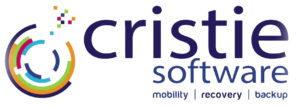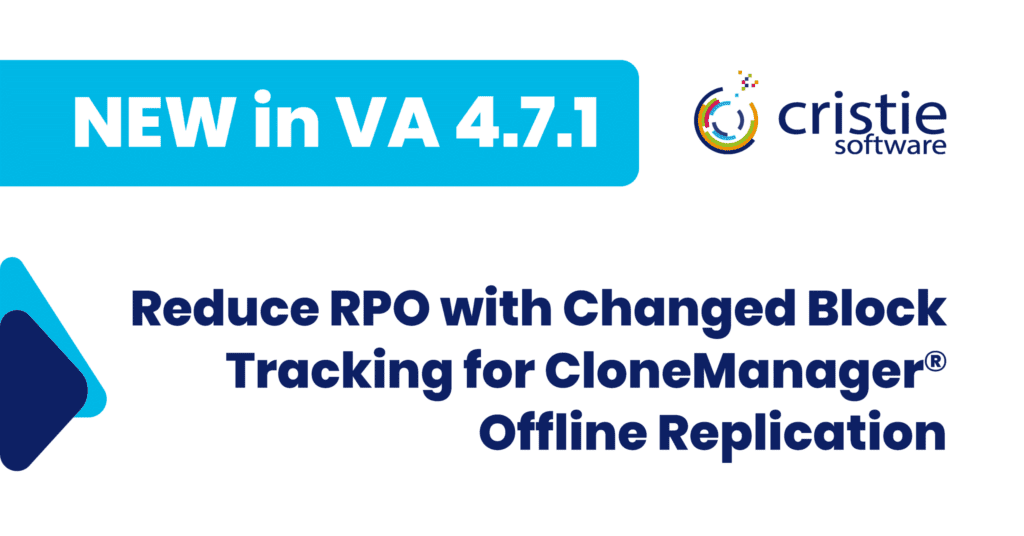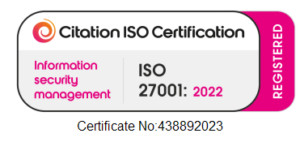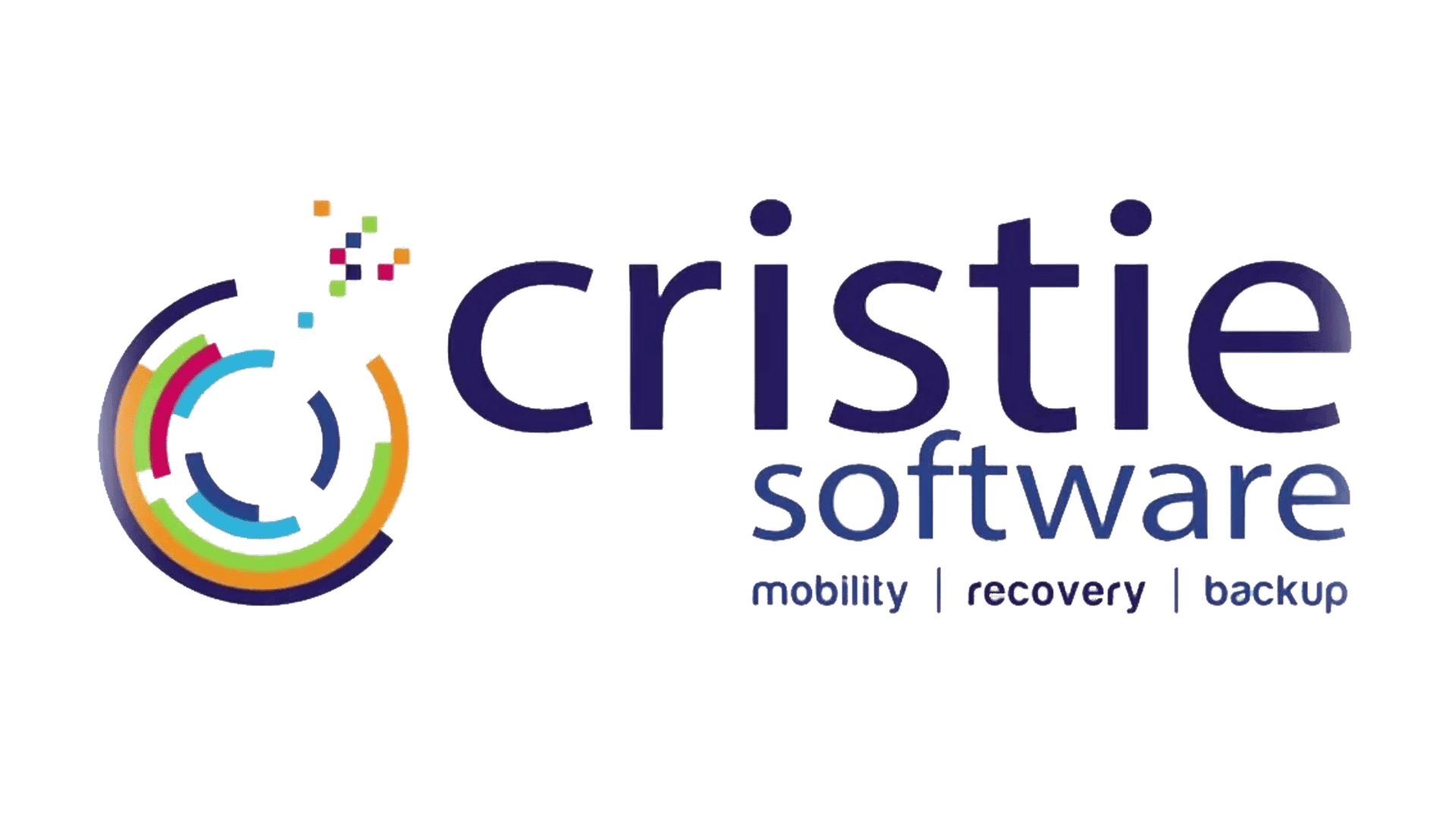Reduce RPO with CloneManager changed block tracking.
The Recovery Point Objective (RPO) is a crucial concept in disaster recovery and business continuity planning. It represents the maximum amount of data loss that an organization is willing to tolerate in the event of a system failure and is expressed as an amount of time. RPO can be reduced by increasing the frequency that system images are taken and stored in a backup environment to facility recovery when an outage occurs. Systems which host data intensive applications will require a low RPO to minimize data loss. Cristie’s CloneManager replication software fulfils this objective through the addition of Changed Block Tracking for offline replication which is now available with our VA 4.7.1 release. This provides an efficient mechanism to track filesystem changes and allows near continuous real-time replication. Large databases can now be synchronized with minimal data throughput and RPOs are reduced to seconds rather than hours.
Changed block tracking with offline replication.
Changed block tracking is deployed through a lightweight filesystem driver which continuously scans the source system under protection for file changes. Every file change is communicated to a target environment where an offline system image is maintained. In the event of a disaster scenario the system image stored in the target system is processed against the log of all filesystem changes since the time of creation, producing a bootable image which is a replica of the source system before the failure occurred. Previously, filesystem tracking had to be scheduled to a predefined frequency. Now with changed block tracking the process is fully automated so that the changelog is updated whenever filesystem changes occur. This ensures that the offline bootable image is as current as possible in the event of a system outage.
The benefits of offline replication.
Cristie’s CloneManager supports both ‘online’ and ‘offline’ replication targets. Targets are termed ‘online’ when they are running machines ready to instantly take over from the primary system. Online replication targets have the advantage that they are ready to run and can takeover operations very quickly. The downside is that they are consuming physical or virtual compute resources continuously while merely waiting for an incident to happen. To overcome this resource overhead an alternative exists in the form of virtual disk image files. Virtual machines can be captured as a complete image in the same way that a system drive in a physical machine can be captured as a single disk image. The image file contains everything including the OS configuration, applications, and data. System replication can be performed to a virtual disk image file stored within a private or public cloud environment rather than to a running machine. This has a significant cost advantage as only the cost of cloud storage is required to maintain these image files rather than storage plus compute resources. The disadvantage is the time taken to boot the image and bring the machine on-line, but for many DR scenarios the Recovery Time Objective (RTO) they provide can be measured in a few minutes which is often sufficient. Cristie replication solutions provide both online and offline replication capabilities with support for all common system image standards including .vhdx, .qcow2 and .vmdk file formats via the Cristie VA.
How can I take advantage of changed block tracking today?
The initial release of changed block tracking supports the Windows OS only, and replication to Amazon EC2, Oracle BLOB, or any S3 compliant storage including MinIO. Future releases will support Azure and VMware plus additional operating systems.
The importance and benefits of reducing RPO.
Here are some reasons why the Recovery Point Objective is important:
Minimizing data loss: This ensures that critical data is protected and minimizes the potential impact of data loss on business operations.
Compliance requirements: Many industries and regulatory bodies have specific data protection and recovery requirements. Adhering to these regulations is essential to avoid legal penalties, reputational damage, and loss of customer trust. The RPO helps organizations align their data recovery practices with compliance standards and demonstrate their commitment to data protection.
Operational continuity: Data is a vital asset for organizations, and its loss or unavailability can severely impact day-to-day operations. By defining an RPO, organizations can establish recovery timeframes and implement measures to ensure that data is consistently backed up and recoverable.
Financial implications: Data loss can have significant financial consequences for organizations. The cost of recovering lost data, rebuilding systems, and compensating for the disruption can be substantial. By setting an appropriate RPO, organizations can assess the cost-effectiveness of their data protection strategies and allocate resources accordingly. This allows them to strike a balance between investment in data recovery and the potential financial impact of data loss.
Customer trust and satisfaction: In today’s data-driven world, customers expect organizations to safeguard their information. If an organization experiences a data breach or loss, it can erode customer trust and damage its reputation. By implementing robust data protection measures, including meeting RPO objectives, organizations can assure customers that their data is secure and instill confidence in their ability to handle potential disruptions.
In summary.
Recovery Point Objective is hugely important and safeguards many aspects of business operations as highlighted above. The new changed block tracking feature from Cristie adds an additional layer of automation for our customers to ensure their vital business systems are protected. Visit the CloneManager® and System Recovery product pages or contact the Cristie Software team for more information regarding the Cristie Software suite of solutions for system recovery, replication, migration, and ransomware protection.

